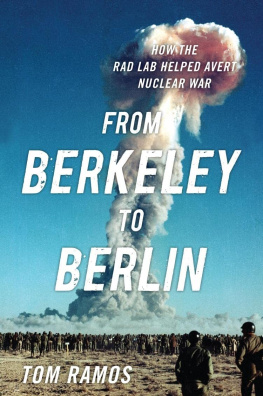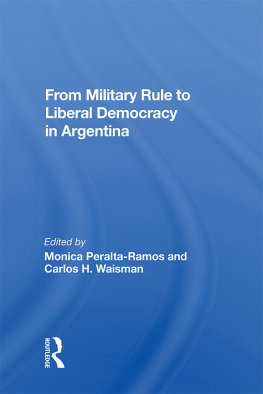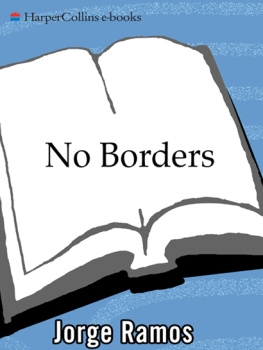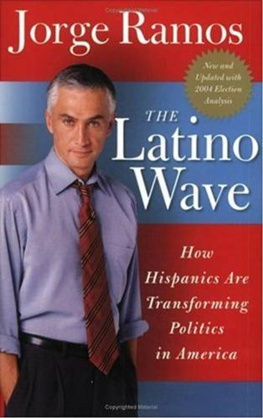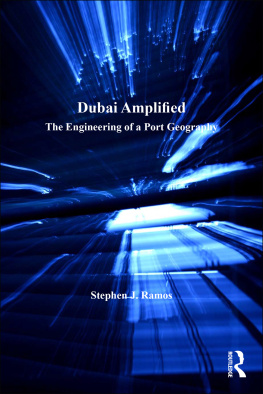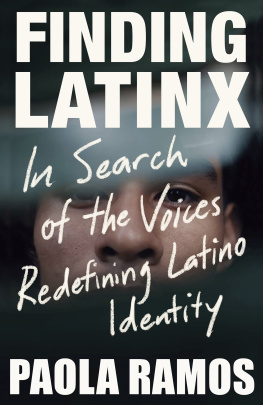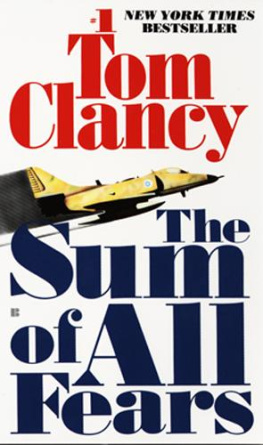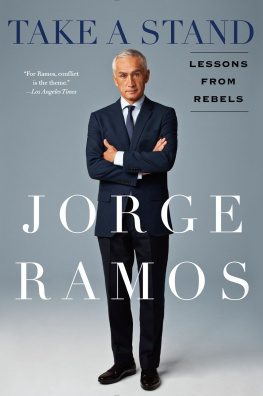Tom Ramos - From Berkeley to Berlin: How the Rad Lab Helped Avert Nuclear War
Here you can read online Tom Ramos - From Berkeley to Berlin: How the Rad Lab Helped Avert Nuclear War full text of the book (entire story) in english for free. Download pdf and epub, get meaning, cover and reviews about this ebook. year: 2022, publisher: Naval Institute Press, genre: Politics. Description of the work, (preface) as well as reviews are available. Best literature library LitArk.com created for fans of good reading and offers a wide selection of genres:
Romance novel
Science fiction
Adventure
Detective
Science
History
Home and family
Prose
Art
Politics
Computer
Non-fiction
Religion
Business
Children
Humor
Choose a favorite category and find really read worthwhile books. Enjoy immersion in the world of imagination, feel the emotions of the characters or learn something new for yourself, make an fascinating discovery.
From Berkeley to Berlin: How the Rad Lab Helped Avert Nuclear War: summary, description and annotation
We offer to read an annotation, description, summary or preface (depends on what the author of the book "From Berkeley to Berlin: How the Rad Lab Helped Avert Nuclear War" wrote himself). If you haven't found the necessary information about the book — write in the comments, we will try to find it.
Tom Ramos: author's other books
Who wrote From Berkeley to Berlin: How the Rad Lab Helped Avert Nuclear War? Find out the surname, the name of the author of the book and a list of all author's works by series.
From Berkeley to Berlin: How the Rad Lab Helped Avert Nuclear War — read online for free the complete book (whole text) full work
Below is the text of the book, divided by pages. System saving the place of the last page read, allows you to conveniently read the book "From Berkeley to Berlin: How the Rad Lab Helped Avert Nuclear War" online for free, without having to search again every time where you left off. Put a bookmark, and you can go to the page where you finished reading at any time.
Font size:
Interval:
Bookmark:
FROM
TO
HOW THE
RAD LAB HELPED AVERT
NUCLEAR WAR
TOM RAMOS
Naval Institute Press
Annapolis, Maryland
Naval Institute Press
291 Wood Road
Annapolis, MD 21402
2022 by Tom Ramos
All rights reserved. No part of this book may be reproduced or utilized in any form or by any means, electronic or mechanical, including photocopying and recording, or by any information storage and retrieval system, without permission in writing from the publisher.
Library of Congress Cataloging-in-Publication Data
Names: Ramos, Tom, author.
Title: From Berkeley to Berlin : how the Rad Lab helped avert nuclear war / Tom Ramos.
Other titles: How the Rad Lab helped avert nuclear war
Description: Annapolis, Maryland : Naval Institute Press, [2022] | Includes bibliographical references and index.
Identifiers: LCCN 2021045929 (print) | LCCN 2021045930 (ebook) | ISBN 9781682477533 (hardcover) | ISBN 9781682477540 (ebook) | ISBN 9781682477540 (epub)
Subjects: LCSH: Deterrence (Strategy)History20th century. | Nuclear weaponsResearchCalifornia. | Military researchUnited StatesHistory20th century. | Lawrence Radiation LaboratoryHistory. | Lawrence Livermore LaboratoryHistory. | United StatesForeign relationsSoviet Union. | Soviet UnionForeign relationsUnited States. | Cold War.
Classification: LCC U162.6 .R36 2022 (print) | LCC U162.6 (ebook) | DDC 355.02/17dc23
LC record available at https://lccn.loc.gov/2021045929
LC ebook record available at https://lccn.loc.gov/2021045930
Print editions meet the requirements of ANSI/NISO z39.48-1992 (Permanence of Paper).
Printed in the United States of America.
30 29 28 27 26 25 24 23 22 9 8 7 6 5 4 3 2 1
First printing
As I write these paragraphs after nine years of research and toil, I recollect how much I owe to some men who mentored me to be an able participant in keeping our country safe from predatory nations who would seek to destroy our way of life. George Maenchen, Ira Chuck Gragson, and Bill Grasberger, three outstanding physicists, showed infinite patience while they taught me how to be a professional physicist. I am forever grateful to them.
Some of the first victims I cornered to read my work were family members. My son, Mark, was first to inform me that not all readers are as intrigued with neat physics stuff as I am, so I should calm down the language a bit to make it intelligible to average people. Daughters Loretta and Ariana dutifully read through pages of early drafts and made some badly needed corrections in my grammar. My wife, Rose, has been my private cheerleader for years, encouraging me to keep to the task. My good friend Gina Bonanno, who is a National Research Council fellow, bravely read through my original manuscript to offer valuable advice about making sense out of the physics. Cherie Turner, my physical therapist who helped me recover from a horrific cycling accident, is a past editor of San Francisco magazine and spent hours poring over drafts and performing badly needed editing chores. I am also deeply indebted to my friend Jim Oliver, who helped me with the myriad challenges of digitally preparing this text for publication.
Tremendous encouragement came from my West Point classmates, especially Jim McDonough, Gary Dolan, Bill Taylor, and Skip Bacevich. These Vietnam veterans are awesome professionals who know how to write, and they were not stingy with helpful advice. Collin Agee, one of my former students when I taught at the Academy, introduced me to Steve Pieczenik, an author of best-selling books and a ghost writer for Tom Clancy. John Antal, another successful author and a good friend, read through an early manuscript and gave me encouragement to keep to the task. Steve and John offered valuable suggestions on how to make the book more enjoyable to read. My classmate Jerry Morelock, editor of Armchair General magazine, introduced my project to a talented editor at the Naval Institute Press, Pat Carlin. I am indebted to Pats energy and steadfastness to turn this manuscript into a book.
One of the great pleasures of this project was the opportunity to work with two incredible gentlemen. Ken Ford, the man who did the crucial calculations that designed the worlds first hydrogen bomb and is thus part of this history, reviewed my work and gave so much time to help ensure this books accuracy that I cannot overstate my gratitude. Bruce Goodwin, who directed nuclear-weapons research for several years, also reviewed my work and, importantly, provided me the opportunity to delve into research about those early years of the Cold Warhow Ernest Lawrence and his flock of physicists working at a laboratory in Livermore, California, were able to serve our country so well.
The Lawrence Livermore National Laboratory itself has been a good home to me throughout the latter course of my life, and I have grown to appreciate and cherish that institution greatly. The idea that there were upstarts at the Laboratory, significant figures who, early in the Cold War, helped our country face and survive threats from Josef Stalin and Nikita Khrushchev, was a revelation to me. Those upstarts, including Mike May, Johnny Foster, and Harold Brown, offered me hours upon hours of their time to assure me that my interpretation of events in the 1950s was accurate. Former Laboratory director C. Bruce Tarter, who published a history of the institution titled The American Laboratory (2018), generously opened up his personal library to me and became an inspiration, encouraging me in my research.
I have interviewed physicists who participated in many of the actions depicted here, gentlemen who are now in their eighties and nineties. They include Bill Grasberger and George Maenchen, two of the aforementioned mentors who helped guide me to be a nuclear-weapons designer in the 1980s. I also had guidance from Dan Patterson, John Nuckolls, and Bill Lokke, three icons from the Laboratorys golden age. My interview with Arne Kirkewoog gave me insight into the world of radiochemistry.
Of course, I treasured reading through the interviews conducted by Laboratory archivist Jim Carothers. Jim sat down with me after I had completed a stint as a designer of X-ray lasers in the 1980s, so I am familiar with how he masterfully conducted his interviews. Those from the 1960s, 1970s, and 1980s of key Laboratory scientists and engineers gave me incomparable insights into what the young and inexperienced professionals were thinking as they made history. Jims successors on the archives staff, Beverly Bull, Maxine Trost, and Jeff Sahaida, have been extremely helpful in providing the raw materials I used to research events from the mid-twentieth century. I should also thank those hard-working professionals at the Laboratory, especially Cyndi Brandt and Joan Houston, who have provided technical support for the many lectures I have been called on to give.
That all-important task of passing my manuscript through a classification process was accomplished by highly talented experts in the Laboratorys Classification Office, led by David Brown and ably assisted by Edna Didwall. David and Edna spent innumerable hours going over each sentence to ensure that it met classification standards. The three of us once spent two days together during which they gave me sage advice on how to express ideas in a way that fell within an accepted protocol. Without them, this story would never have been told.
In a world that has experienced a military conflict practically every year since the end of World War II, how is it that the superpowers have not used a nuclear weapon in anger? Soviet premier Josef Stalin had shown time and again his willingness to use whatever force necessary to achieve his political goals: for example, he ordered the deaths of millions of Ukrainians in the 1930s to achieve his economic plans for the Soviet Union. Nikita Khrushchev, one of Stalins lieutenants, was just as much a thug. Considering that a highly aggressive Soviet Union, which became a nuclear-armed state in 1949, emerged from a world war intent on spreading communism through revolution, it is indeed a wonder the Soviets did not use nuclear weapons to further their cause. That was not an accident. On a few occasions during the Cold War, the United States and the Soviet Union came terribly close to exchanging nuclear strikes, but something stopped that from happening.
Next pageFont size:
Interval:
Bookmark:
Similar books «From Berkeley to Berlin: How the Rad Lab Helped Avert Nuclear War»
Look at similar books to From Berkeley to Berlin: How the Rad Lab Helped Avert Nuclear War. We have selected literature similar in name and meaning in the hope of providing readers with more options to find new, interesting, not yet read works.
Discussion, reviews of the book From Berkeley to Berlin: How the Rad Lab Helped Avert Nuclear War and just readers' own opinions. Leave your comments, write what you think about the work, its meaning or the main characters. Specify what exactly you liked and what you didn't like, and why you think so.

